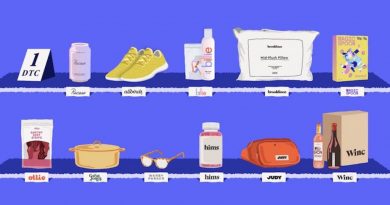Super Saturday, Potentially a Record-Breaker Without Big Crowds – WWD
Will Super Saturday live up to its name?
It’s likely to be tempered by all the earlier Christmas shopping by consumers spurred by retailers unleashing holiday campaigns as early as mid-October. There’s been a flattening of holiday sales patterns this year, unlike the peaks and troughs seen in past years.
In addition, after Super Saturday this year, there are still five days of shopping left until Christmas. So between the way the calendar falls and the impact of the pandemic there is unlikely to be the usual last-minute rush for Christmas gifts this year.
Nevertheless, with retailing generally holding up this holiday season, particularly among mass chains, big-box home stores and online shopping, Customer Growth Partners predicts Super Saturday 2020 will be the biggest volume day in history, generating a record $36.1 billion in sales, up 5.5 percent from last year, despite COVID-19 and millions of Americans being out of work.
Last year, Super Saturday — always the last Saturday before Christmas — generated $34.4 billion, and in 2018, Super Saturday generated $31.9 billion in sales.
For the last four years, Super Saturday has generated more volume than Black Friday, which totaled $29.7 billion in sales this year, according to Craig Johnson, president of CGP.
While bullish about Super Saturday, Johnson did say that it won’t see as much of a sales spike as seen in previous years.
CGP also predicts December will be up about 6.5 percent, compared to November’s 9.1 percent and October’s 10 percent pace.
The National Retail Federation’s chief economist, Jack Kleinhenz, is more circumspect about what could lie ahead. “The month-over-month decline isn’t surprising because some spending was pulled forward into October by campaigns encouraging consumers to shop early and shop safe,” he said Wednesday. “Despite that, as we go into the final weeks of 2020, year-over-year trends show spending is holding up well regardless of month-to-month fluctuations. Nonetheless, we have to remember the remainder of the holiday season depends critically on the virus. We are optimistic, but spending could shift into a lower gear if the virus continues to spread.”
“Consumers held back on spending in November as virus rates spiked, states imposed retail restrictions and congressional stimulus discussions were gridlocked,” added NRF president and chief executive officer Matthew Shay. “While consumers have been bolstered by increases in disposable income and savings, it’s clear that additional fiscal stimulus from Congress is needed and we are hopeful it will be passed soon as we enter the final stretch of the holiday season. With retail sales up 8.8 percent versus November 2019, we still expect a strong holiday season compared with last year.”
Sensormatic Solutions was also less optimistic about Super Saturday this year, indicating that it expects it will be the second busiest shopping day, behind Black Friday, and that it won’t be as big as previous years.
“We’ve seen more dispersed shopping patterns over the last few months as more consumers shop on weekdays while they work from home and try to avoid larger crowds on weekends. While Saturdays are still the biggest shopping day of the week, it has flattened considerably during the pandemic,” said Brian Field, senior director of global retail consulting at Sensormatic. “This year’s Super Saturday is almost a week before Christmas Day, which falls on a Friday, leaving more time for in-store shopping the week before the big day. The Monday, Tuesday and Wednesday leading up to Christmas Eve all play prominent roles (ranking) sixth, eighth and fourth, respectively, in our list of the top busiest days.”
Sensormatic sees Black Friday as this year’s busiest day, followed by Super Saturday (Dec. 19) and the day after Christmas, Dec. 26.
“While COVID-19 is reshaping the way U.S. consumers are currently shopping and will shop for the 2020 holiday season, retailers should remain optimistic,” said Bjoern Petersen, president at Sensormatic. “Since the beginning of the pandemic, we’ve noticed a shift toward weekday shopping as consumers take advantage of the new remote work reality while also consciously avoiding the historically large weekend crowds. We expect this trend to continue into the holiday season. U.S. consumers continue to be more purposeful in their shopping journeys, so retailers need to make sure they capitalize on every in-store visit.”
But for CGP’s Johnson, the strength in spending online and in stores in November and for the first ten days of December “sets the stage for a record Super Saturday.…Digital growth is clearly driving about 70 percent of the total growth, but physical stores — particularly big box retailers such as Dick’s Sports, Target and Home Depot — are seeing modest footfall growth converted into robust net traffic growth, along with rising average purchases as shoppers consolidate trips in this ‘COVID-19 Christmas’ season. Home and hardlines —notably electronics, home improvement, sporting goods, etc. — are sizzling, as consumer spending migrates from apparel toward the home and work-from-home lifestyles.”





